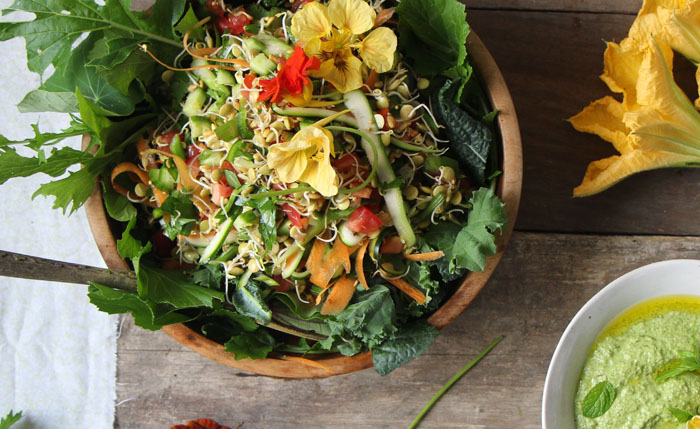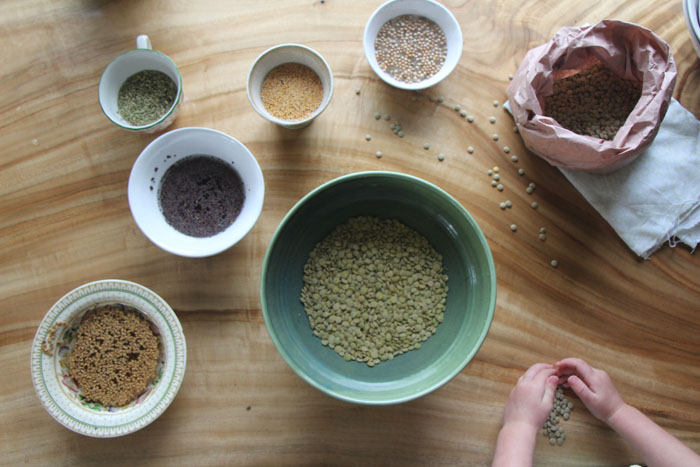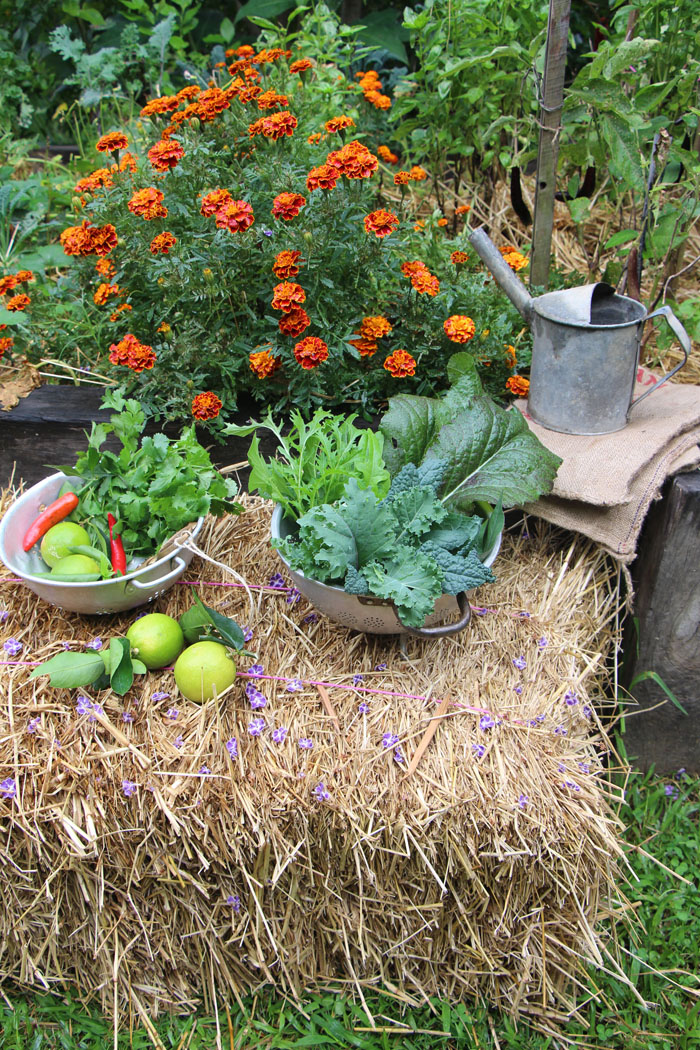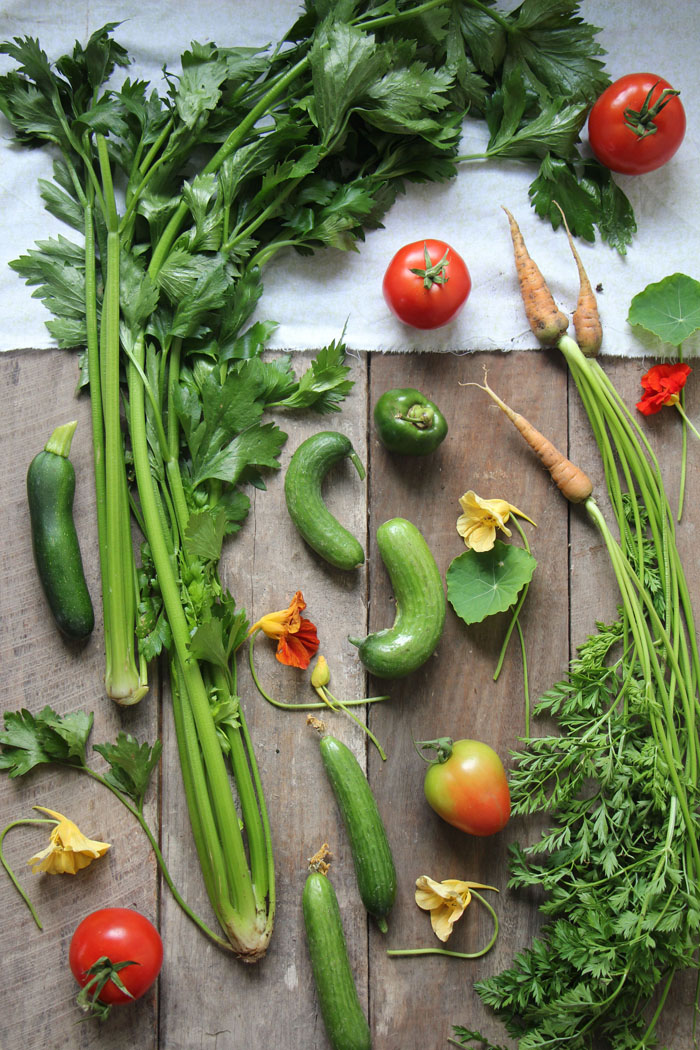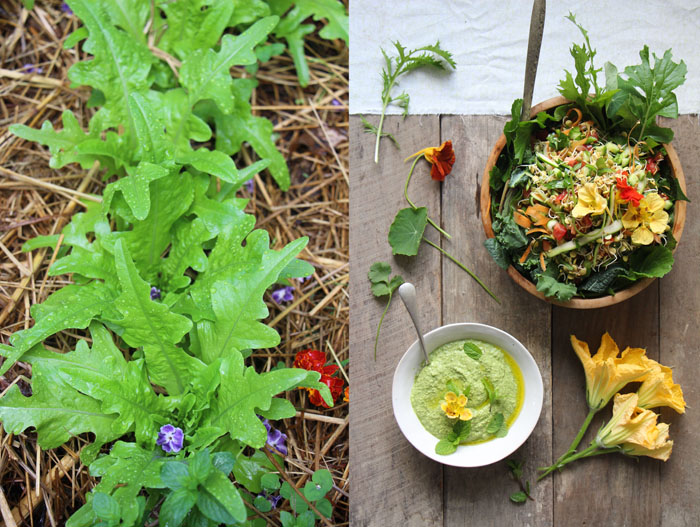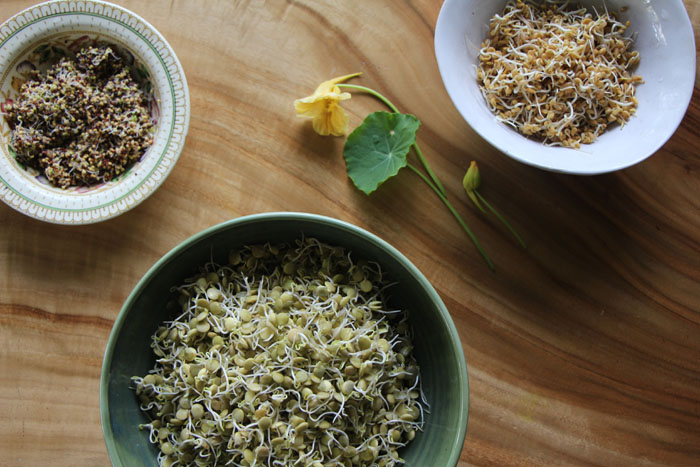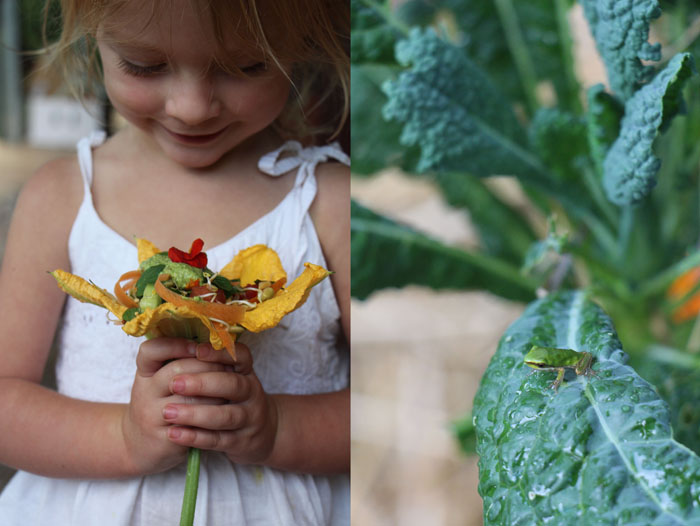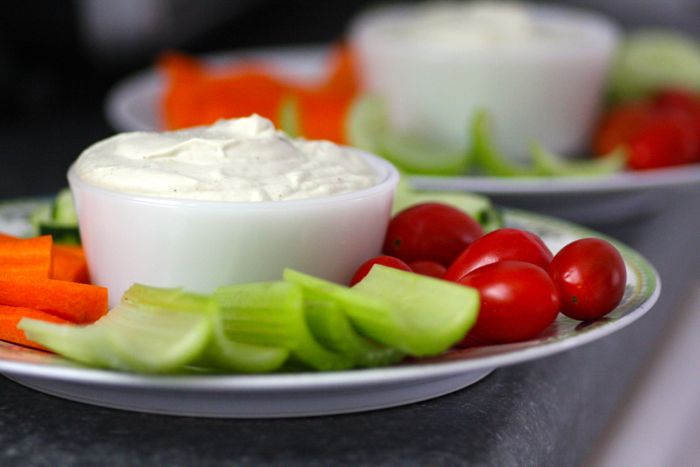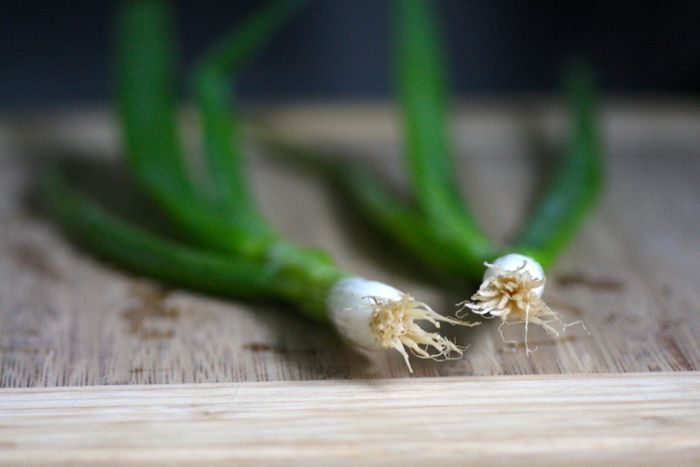
May 18th, 2013
Happy Saturday everyone! Life has been hectic lately, there is still work on the cookbook and many other food related projects going on around here, but I am getting back into the swing of things and should be back to regular posting soon. I’m still spending much of my time cooking and you can see my daily kitchen snaps on Instagram. Meanwhile, here is another exciting guest post, this time from Amy of The Wooden Spoon. Amy lives in Australia with her husband and daughter and is a long time yoga teacher. She shares her fresh, vibrant culinary creations on her blog, along with stories of organic farming and overall sustainable living. Pay a visit to The Wooden Spoon for loads of inspiration and positivity. Here is Amy:
I felt a little like an adolescent school boy asking a young girl he’d been secretly admiring out on a date as as I sat at the computer, trying to write Anya an email. “Errrm…do you…think that ummm…you might…sort of like to hmmm…consider me for a guest post?” I wrote the words without in any way expecting a reply. But when I got one… I won’t lie to you… I had a little dance and said “whooooohoooo!!!” kind of loud. What a dream to be able to post on such a space!
But there began my dilemma. What to post? What do I have worthy of sharing at this wonderful feast that is Golubka…so full of inspired ideas, of beautiful images, of healthful, nurturing, creative and life-giving dishes. What do I have to bring to the table?
While considering a recipe worth sharing I was filled with so many ideas and possibilities that somehow they all got stuck and nothing would come out. I looked to our garden for inspiration… custard apples are in season, the pineapples are ripening, the branches of the lime trees are heavy with fruits, leafy greens are flourishing in our cooling Australian sub-tropical Autumn, but still…nothing. I wanted something special of course, something that would would speak entirely for our kitchen…
and our garden…
Slowly but surely an idea emerged…
and this was it…a salad of sprouted green lentils, sprouted mustard seeds and sprouted fenugreek with a dressing of coriander, mint, chilli and sunflower seeds.
As you might be able to tell from this post I love a big bowl of hearty dahl. This salad combines many of the same ingredients (including the spices) used in a dahl but entirely raw and sprouted. It’s a recipe that needs a few days in preparation because first, you need to sprout your sprouts.
Sprouting is something that has become somewhat of a delight for our two year old daughter, Bhumi. She takes the utmost pleasure in adding water to the seeds and pulses, draining them and then covering each bowl in cloth so they can sleep while they grow. Each day she carefully untucks the cloth and turns them in her hands, singing with excitement over the ‘tails’ that are sprouting from each pulse or seed.
I watch her as she careful removes just one little mustard seed from the bowl and places it in the palm of her hand. “Awwww.” She says. “It’s just a widdle baby.” I feel a shiver of joy and reverence run down my spine. That tiny little sprout she holds in her chubby hand contains within it a seemingly unending array of vitamins, enzymes and amino acids and represents the point of greatest vitality in the life cycle of a plant. The building blocks of health itself.
The inner gardener in me gets a little overwhelmed just at the sight of one big bowl of sprouts…if I was to plant them all I would need fifty, maybe even one hundred times the garden space I have now. But blessedly, I am able to take the nutrients capable of growing into a whole field of leafy greens, and sit down to it at one easy and delicious meal.
Later, in the garden Bhumi stands in awe at the mustard green plants as I explain to her that such a big plant grows from just one tiny seed. Undoubtedly, it is a miracle…every time.
During sprouting, enzyme and vitamin content increase dramatically (sometimes over eight times the nutrient content pre-sprout!). Not only do nutrient values get to kick-ass quantities but all the complex starches within convert into simple sugars, protein is turned into amino acids and crude fat is broken down into free fatty acids (anything simple and free in my books is a winner). This magical and reverential sprouting process takes the nutrients of the seed and pre-digests them for you, making it just that much easier to assimilate and metabolise. This explains why grains and legumes, many of which are common allergens, often do not cause allergies when sprouted.
In our kitchen I try to at least soak (sparking the sprouting process) all of our seeds, nuts, grains and legumes…including whole spices. Todays recipe calls on many whole spices, two of which are entirely sprouted. These two are mustard seeds and fenugreek.
Mustard by nature is very warming, strengthening and stimulating to the digestive system. Like teeny tiny multi-vitamin pills they contain essential B complex vitamins (excellent for vegetarians!), essential oils, niacin as well as calcium, manganese, copper, iron, selenium and zinc. As well as giving a peppery kick to any recipe its added to, mustard can be used for a wide variety of medicinal purposes from cancer to premature balding. If planted in the garden and allowed to flourish into a leafy green it can be eaten to relieve lung infections, colds and coughs.
We have mustard greens growing wildly all over our garden and I have never once purposely planted a seed. They pop up anywhere where we have buried compost (from our food scrap compost or composting toilet) and continue to self seed season after season. We use their peppery leaves in salads, stir-fries and have found it adds an incredible dimension to sauerkrauts and vegetable ferments.
Fenugreek is a sister herb to garlic and is one of the oldest recorded medicinal herbs known to man. To tell you all of its attributes would take me all day so perhaps I will share with you its most notable attribute for being able to alleviate mucous in the body. On a farm community where I lived years ago we would make a strong tea of whole fenugreek and drink it at the onset of a cold. If sufficient tea was consumed then no mucous would show up and the cold would pass in half the time. The only downside (depending on which way you want to look at it) is that it seeps from your pores sometimes for days later, giving you a slightly spicy smell (which some might actually find kind of yummy).
To make your sprouts, simply cover each grain or seed in water and soak over night. In the morning, strain them seperately through a colander and rinse well. If you have specialised sprouting equipment then simply follow the instructions on the package. If you don’t have any sprouting equipment then a wide-lidded jar covered at the opening with some gauze or muslin makes an excellent substitute. In this way the sprouts can be easily rinsed, drained and then stored opening down on a wire wrack.
Personally (because I usually sprout in quite large quantities), I prefer to leave the sprouts in a sieve or colander and simply wrap the entire colander after each rinse in a tea-towel or cloth, placing them in a warm, dark place to rest. It’s best to water your sprouts twice a day, morning or night by allowing water to run freely through them. The more thoroughly and more regularly you rinse your sprouts, the better the flavour.
You can experiment with how long you want to leave your sprouts to grow. Different seeds will sprout at different rates, also depending on external climatic conditions. I find that 2-4 days is usually enough. At that point you might like to place the sprouts on a shallow tray in some gentle light to allow the chlorophyl to come in. Once you’re happy with how far along your sprouts have come, they can be stored in a sealed container in the fridge for up to a week or more.
Dahl Inspired Sprouted Salad with Coriander, Mint and Sunflower Seed Dressing
Salad
2 small cucumbers, chopped into small pieces
1 stalk of celery, finely sliced (including the leaves)
2 ripe tomatoes, finely and carefully chopped
1 carrot, sliced into small ribbons with a vegetable peeler
1 zucchini, sliced into small ribbons with a vegetable peeler
1 green capsicum, finely chopped
2 big handfuls of sprouted green lentils
1 big handful of sprouted fenugreek
1 small handful sprouted yellow and black mustard seeds
A variety of leafy greens (I used mustard greens, mizuna, lettuce, kale and sweet potato leaves)
Combine all of the finely chopped vegetables with the sprouts and toss. Place on a bed of torn leafy greens.
Dressing
1 cup sunflower seeds (soaked overnight)
1/4 cup hemp seed oil
1/4 cup water
1 bunch fresh coriander, chopped
1 bunch fresh mint, chopped
The juice of two limes
1 fresh red chilli
1 Tbsp coconut sugar
1/2 tsp cumin seeds, soaked overnight
1/2 tsp fennel seeds, soaked overnight
1/2 tsp coriander seeds, soaked overnight
Salt and pepper to taste
Combine all ingredients together in a high-speed blender and blend until smooth.
I served this salad inside large male pumpkin flowers. Its flavours were a wonderful and exciting combination of sharp and mellow, spicy and cooling, refreshing and light, but simultaneously filling and satisfying. Give it a try, I think you might like it.
Tags: coriander, guest post, mint, recipe, salad, sprouted, sunflower seed

April 28th, 2013
This Sunday’s guest is Sarah, a self-taught baker from Minneapolis, who writes the beautiful Vanilla Bean Blog. If you haven’t visited yet, I suggest heading over right away for stunning food photography, great stories, amazing recipes, and the most mouthwatering cakes. Now that spring is in full swing and the sun shines brighter, cooling drinks are on everyone’s mind and we are very excited for this delicious drink recipe. Here is Sarah:
Hello! I’m so happy to be posting at Golubka; it’s such a gorgeous space and I find it so inspiring and encouraging. Here in Minnesota we’ve been struggling to get to Spring (it’s been snowing for six months straight), and I thought a fizzy summer drink would help get things started. I’ve had ‘fruity-honey-drink’ on my to-do list for two summers now, because while I must admit I love drinking iced lattes and black tea lemonade, they are always made with too much sugar and I start to regret them. I wanted to come up with something that was refreshing and delicious, but didn’t contain a lot of sugar or caffeine. Since the only two things I can grow successfully is rhubarb and raspberries, I thought they would be a perfect place to start. After some tinkering, the rhubarb-raspberry fizz was born. It is a sweet-tart drink, with a small amount of honey balancing the sharp fruit. It’s incredibly tasty, and I’m looking forward to spending the (short) summer months sipping it.
Rhubarb Raspberry Fizz
Instead of simmering the rhubarb and raspberries with honey, I’ve added the honey to the warm juice after it’s been cooked and strained. I found this gave it a more ‘clean’ honey taste. I thought 2 tablespoons was the perfect amount – it still left a little bit of tartness to the drink. Feel free to add more if you’d like it sweeter. If you want to make the juice ahead, remember that honey will firm up in the fridge, and you will have to gently reheat the mixture to loosen the honey. Sugar could be substituted, although I would include it in the simmering stage. A tablespoon or two of minced ginger would be lovely here, and strawberries or blueberries would make a nice substitution for the raspberries. A splash of bourbon is also excellent! I made this with both straight up tap water and club soda, and liked it both ways.
12 ounces rhubarb, chopped into 1 inch pieces
4 ounces raspberries
1 vanilla bean pod, seeds scraped
2 cups water
8 tablespoons good honey (more or less to taste, see note)
water, club soda, ginger ale, or any other bubbly drink you think would be a good fit
Place the rhubarb, raspberries, vanilla bean seeds and pod, and water in a sauce pan. Bring to a boil, and then let simmer for 30 minutes until rhubarb is tender. Place the mixture in a strainer over a large bowl and press on the rhubarb and raspberries until all the juice is released (you should have about 2 cups). Discard the pulp. Divide the warm mixture equally between 4 glasses and stir 2 tablespoons honey into each glass (more or less to taste), making sure honey is dissolved. Let cool, and then add equal amounts water, club soda, or ginger ale to each glass (about 1/2 cup per glass). Top with ice, and serve.
Tags: drink, guest post, raspberry, recipe, rhubarb

April 21st, 2013
Today we’re thrilled to welcome more guests, Shanna and Tim of Food Loves Writing, who came up with a delicious veggie dip recipe to share with us. You may have noticed a new wave of guest posts on Golubka lately – that’s because we’re still working on the cookbook, which is in the copy editing stage at the moment, and generally trying to take a little rest from intense recipe development. I enjoy the concept of guest posts so much, sharing and exchanging ideas often leads to the best recipes, meals and friendships.
Food Loves Writing is a literary food blog written by an amazing husband and wife team based in Nashville. Focusing on engaging storytelling intertwined with whole food recipes, Shanna and Tim run a warm and charming site, which I always find hard to leave, wanting to read just one more post. Be sure to pay them a visit and check out their ebook, Written Together. Here is Shanna’s beautiful story:
Hello, Golubka readers! I’m truly so honored to be posting here today, partly because, like many of you, I so admire the quality of work on this site, and partly because, also, I resonate so much with the philosophy here of a fearless approach to new foods. Thanks again for the generous invitation, Anya! I hope you all enjoy hearing a little of our story.
My husband, Tim, wooed me into married life through sixteen months of dating around the delight of what were then many new-to-me foods. When I’d visit from Chicago, he’d bring me into his Nashville kitchen and make me impromptu salads, perfectly fried eggs with the brightest yellow yolks, mashed avocado on toast, sweet potatoes roasted in coconut oil, thick morning smoothies made in a blender he’d packed to the brim.
We’d first met through food blogs (a story you can read more about in our ebook), so the idea that we’d grow together around the table makes good sense. And in the years since I’ve known him, Tim’s taught me about balsamic vinegars and the many varieties of leafy lettuce and how rich a diet can be when one sticks to foods that are real. One month into our married life, going through boxes in our living room, I found an old journal of his, stashed with handwritten notes on the intricacies of ice-cream making, and I thought again how much this man is just my match. Because of this, over time, I’ve learned that when he has an idea, I should listen to it—and that’s the story of how this raw garlic dip, which is at once dairy-free, gluten-free and vegan, came to be.
So Tim said he had an idea for a vegetable or chip dip that would be based off of a cashew cream. I’ve always marveled at what cashews become when you soak them overnight and blend them into a chocolate pudding or raw berry pie, but turning them into something savory would, for us, be new.
Here is what we did: In a high-powered blender, we combined the soaked cashews, coconut milk, two cloves of garlic, two chopped green onions, chili powder and salt. Tasting and adjusting until we had it right, we ended up with a new take on the standard veggie dip, one so delicious I could eat it by itself with a spoon. We ate it with raw vegetables, but it would also be so nice with chips—or spread onto a sandwich or stuffed inside a lettuce wrap. I like to think of it as a testament to quality ingredients, but, I suppose, also, it’s just as easily a testament to love.
Garlic Onion Veggie Dip (Dairy-Free, Gluten-Free, Vegan)
(Makes about three cups, which is plenty for a crowd, and is best served with fresh veggies or your favorite type of chip.)
1 cup of cashews – soaked in water overnight
Around 3/4 cup coconut milk
2 cloves of garlic – grated
2 green onions – chopped
1/2 teaspoon chili powder
Sea salt and pepper
Begin by blending the soaked cashews in a high-powered blender or food processor, with enough coconut milk to almost come to the top of the nuts. Once the mixture is smooth and creamy, add garlic, onions, chili powder and salt. Taste, and add more chili powder, salt and pepper as you like.


